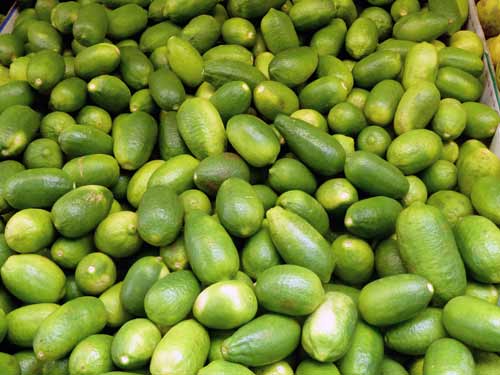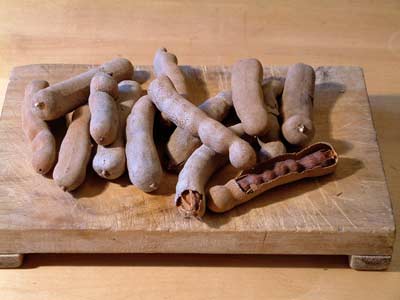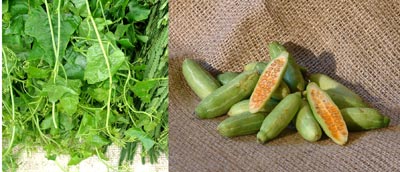
Lemon or lime. These seem to be interchangeable. Since the lime grows much more readily than the lemon in India this is more likely to be a lime.

Tamarind. A sour-sweet fruit, sometimes known as the Indian date, used as a souring agent. It comes in long, dry brown pods which look almost like dried broad bean pods. Inside is a long, segmented fruit, like a long brown caterpillar. Each segment contains a hard, shiny black seed. As the pods dry the fruit becomes sweeter. A visitor from Mauritius suggested shaking the tamarind and, if you could hear that the fruit had detached and was rattling a little inside the pod, you would find that the fruit was sweet. All you need to do is to remove the pod and then chew the fruit, discarding the seeds. It is also available mashed and formed into a pulpy block or as a juice. In this form it is used like lemon juice.

Ivy gourd. A small crunchy gourd reminiscent of a gherkin, green ripening to red, popular in the cuisines of India, Thailand, Indonesia and other South East Asian countries. The shoots and leaves can also be eaten.
Safflower. A thistle-like plant which is a major producer of a high polyunsaturated, flavourless, colourless oil which is good for deep frying and in salad dressings. The flowers are reddish-orange and the styles are sometimes sold as saffron.